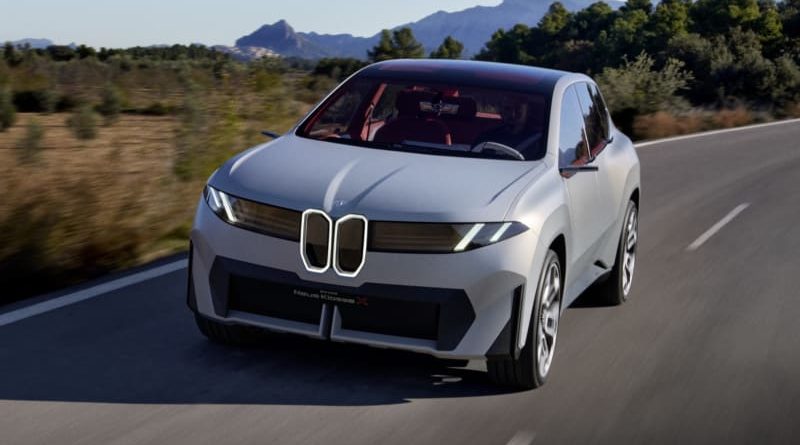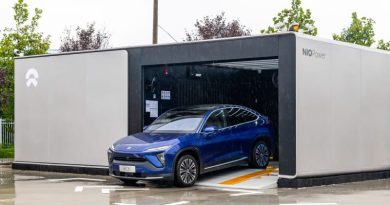BMW Vision Neue Klasse X: Looking to the past to build a better future
The best way to demonstrate how much BMW styling and design will change over the next few years would be to park the new Vision Neue Klasse X next to one of the German automaker’s current SUVs, be it the X3, X5 or X7. One will be expressively styled to the point of polarization, with vents, openings and shapes pushed to their extremes up front, stretched like taffy in the center and boldly dynamic at the rear. The other would be the Neue Klasse X, which we recently got the chance to see and experience in person,.
We’ll spill plenty of virtual ink talking more about the Vision Neue Klasse X’s styling and design, but one thing is immediately clear: The old and new are so different in their execution that it’s hard to believe they emerged from the same studio.
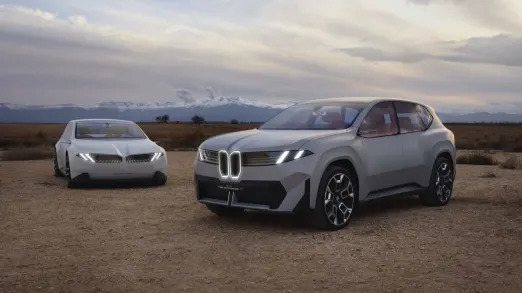
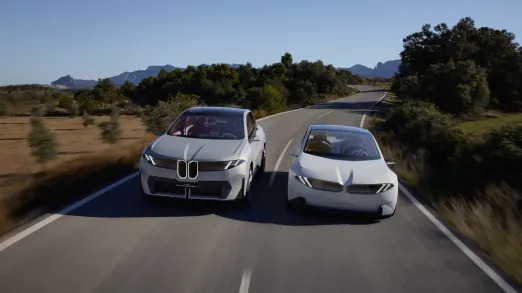
What recent BMW fans may not know, however, is that the Neue Klasse, in both the sedan form we’ve already seen and in this more recent SUV shape, really represents a return to the German brand’s roots. Without diving too deep into history, it’s crucial to realize that this isn’t BMW’s first Neue Klasse (“New Class” in English). That title belongs to the 1962 BMW 1500, a car that revolutionized the marque’s midsize range and was by all counts a tremendous success. The original Neue Klasse was a full-on modernization in design, engineering, performance and style (it was designed by Wilhelm Hofmeister, whose trademark C pillar “kink” is forever memorialized in BMW design), and it marked an important turning point for BMW’s success on the global stage. It’s the car that led BMW to introduce its first E12 5 Series sedan in 1972.
Like the original it clearly references, the whole Vision Neue Klasse X story really revolves around the integration of its design, inside and out, and how it modernizes the way BMW is thinking about automobiles in the future. It’s a cohesive package, or to use BMW’s terminology, a vision into a harmonious look and feel that focuses on efficiency, sustainability, technology and customizability in seemingly equal amounts.
As we alluded to at the outset, only the very broadest of strokes connects the Neue Klasse X with BMW’s current SUV lineup. There may be kidney grilles and styling flourishes in some of the expected places — the Hofmeister kink is indeed there, but it’s part of a translucent and reflective application and not immediately obvious from all angles — but the overall look is extremely subdued when compared with BMW’s recent expressive styling. Starting up front, the two-part grille is immediately recognizable as a BMW shape, but it’s much smaller than we would expect, and instead of a chrome or black-out treatment it’s ringed with a smooth and vertically oriented lighting signature that will be unique to the X class of crossover. That grille is flanked by wide lights that span the whole width of the remaining space, overflowing to the front corners under one clear cover. The lighting elements behind the cover blend together in interesting patterns, with bars that criss-cross and form a three-dimensional shape.
The sides of the car are similarly restrained, but there’s plenty of contouring around the wheel arches and the bottoms of the doors to make the shape look interesting. Although the fenders look tall and appropriate for a crossover shape, there’s plenty of almost uninterrupted glass that conspires with the full glass roof to keep the Neue Klasse X modern and bright. Door handles are integrated into small pulls that are hidden away in the car’s thin and dark belt-line trim.
The rear of the vehicle may be its most characterful angle. The roof ends in almost buttress-shaped hoods that extend over the rear glass. The taillights are wide and horizontal with red slash-shaped elements that serve to bracket the familiar but toned-down BMW roundel badge. At the lower edge, a skid plate of sorts and black trim are the most outright callouts to any sort of off-road utility, though there looks to be solid ground clearance and short overhangs.
If the exterior of the Vision Neue Klasse X is an unexpected exercise in restraint, the interior points toward a harmonious blending of new and old into one tech-heavy experience. There are no black plastic expanses inside the car, nor is there much brightwork to detract from the warm comfort of the highly textural materials in soothing red, gray and white tones. Much of the interior is fashioned from recycled or plant-based materials, and BMW promises some of those will make it into production.
There’s a center screen in the car with similar size and placement to most new cars on the road today, but its shape stands out. It’s uniquely trapezoid-shaped and canted in the direction of the driver. There’s no scroll wheel to be found on the console. Besides being touch sensitive, the HypersonX steering wheel (BMW bolds the “person” between the Hy- and -X) has multifunction buttons to perform tasks in various screens and there’s the latest version of BMW’s Intelligent Personal Assistant that works with voice control.
Much more interesting than the center screen is BMW’s Panoramic Vision tech that projects information across the full width of the bottom few inches of the windshield. There are strong holographic effects at play that provide depth and dimensionality to the display, making it feel futuristic and useful at the same time. A more traditional head-up display will also be part of the production package.

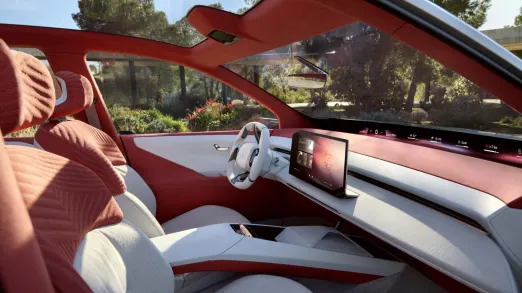
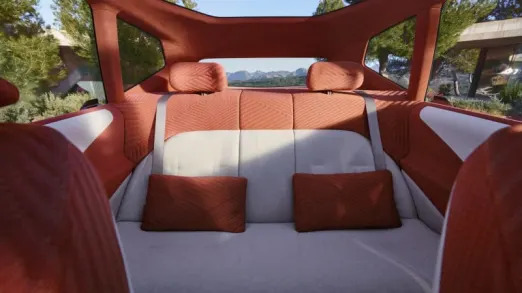
Customization is also part of the Neue Klasse philosophy. Car buyers are used to choosing things like colors and wheels, and more recently automakers have incorporated LED interior lighting in selectable shades to their repertoire (BMW is one of them, with the new i5). BMW’s plans go even further, with a highly customizable layout for its next-gen infotainment tech, selectable LCD screen backgrounds, and user-defined faux motor sounds pumped into the cabin.
Naturally, the Vision Neue Klasse X is electric. But, following the Neue Klasse script, the sixth-generation of BMW’s EV technology is improved for greater efficiency. The battery pack is made from cylindrical cells instead of prismatic, energy density is up 20%, and the 800-volt architecture allows a charge rate that’s 30% higher than past BMW packs. No range estimate is provided — BMW just says a vehicle would be 30% higher with this new powertrain package than its old design — but the pack can charge enough to support a range of 186 miles in just 10 minutes. Coupled with BMW’s latest electric motor design, greater aerodynamic efficiency, an improved regenerative braking system and high-efficiency tires, BMW claims the Vision Neue Klasse X’s overall vehicle efficiency is up 25%.
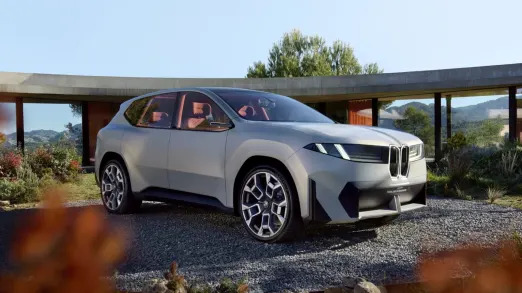
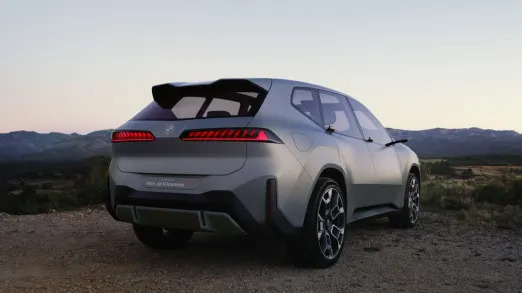
The focus on efficiency has benefits for driving dynamics, too. BMW has spent huge sums of money and man hours developing what it calls “super-brain” computers that boast up to 10-times more processing power than what is currently available. By leveraging the newfound computing might, BMW can cut the total number of on-board “brains” in half, while simultaneously improving the speed at which processing can be done. This, in turn, means better automated driving, faster responses from safety tech, and greater adjustability for things like steering and suspension control.
It’s clear that BMW has a lot riding on its Neue Klasse architecture. And just as the original led the automaker into newfound global success in the early 1960s, BMW has pinned its future on this new Neue Klass. Exactly how much of the design we see in these conceptual visions makes it into production remains to be seen, but BMW repeatedly emphasized to us that all of these new strategies — simplified styling, warm and comfortable interiors, vehicle customization and an increased emphasis on efficiency and sustainability — will be incorporated in the first vehicle we’ll see based on Neue Klasse architecture when it rolls down the assembly line in Debrecen, Hungary in 2025. After seeing and experiencing the Vision Neue Klasse X in person, we have high hopes for BMW’s future.

